New York State is located in the Northeastern United States, occupying an area of 54,556 square miles. The 27th largest state in the U.S. has a population of approximately 20.2 million people, with about 45% living in New York City. Undoubtedly, the state is beautiful and a hub of tourist attractions.
With its continental climate, New York is dominated by hot summers and brutally cold winters. There’s an unstable climate accompanied by blowing winds and alternating stormy waves.
Let’s look at the coldest temperature ever recorded in New York and where.
The Coldest Temperature Ever Recorded in New York
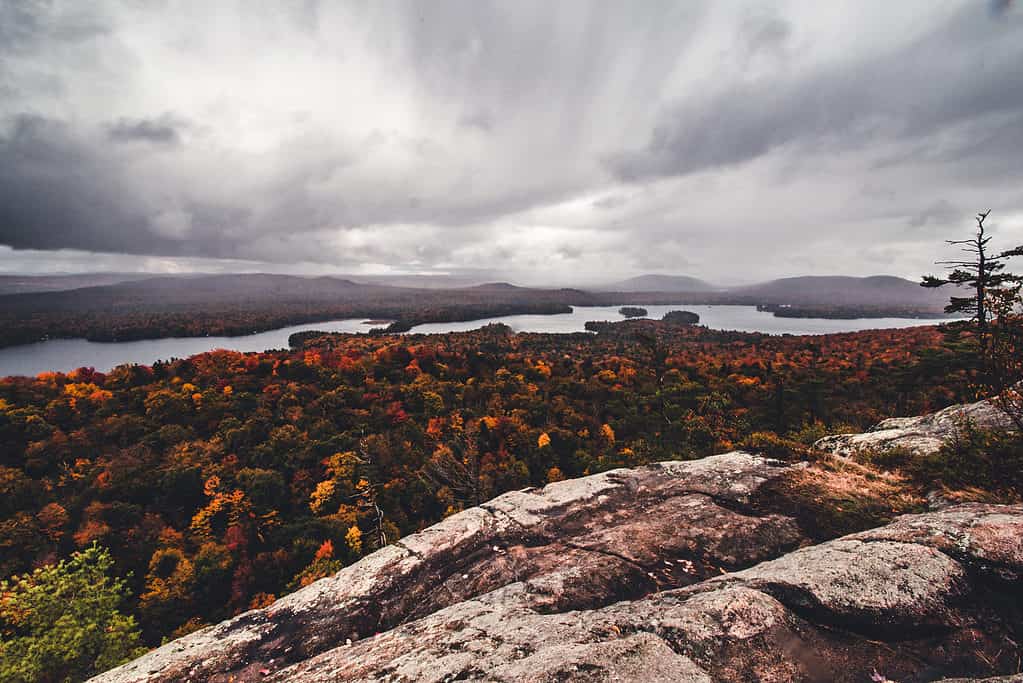
The lowest temperature ever recorded in New York was at Old Forge, on February 18, 1979, when it was -52 degrees.
©Anthony Chabrier/Shutterstock.com
During winters, New York State can record a high of 43º F and a low of 27º F. But that’s not the coldest it has ever been.
The lowest temperature ever recorded by the climatology department was -52 degrees Fahrenheit on February 18, 1979. This was recorded by the National Weather Service Station in Old Forge, between Albany and Syracuse.
The climate in the northeast is humid continental, while a humid subtropical climate dominates the southern side. As a result, winter temperatures usually average below the freezing point in December throughout February. But along the Atlantic coastline, the temperature is several degrees above freezing.
Summer weather prevails from June to September, but extreme southern New York City areas experience summer from mid-May to around mid-October. This is because the annual precipitation in the state spreads evenly throughout the year.
In hotter months, long-lived, large complexes of thunderstorms may invade the Great Lakes and Canada.
The average annual temperature in the state ranges between 39 degrees Fahrenheit near the Adirondack Mountains to about 53 degrees Fahrenheit across Long Island and the Hudson Valley. Two air masses influence this climate variation:
- A dry, cold one from the northwest
- A humid, warm one from the southwest
The northwest airflow is less common, resulting in persistent clouds associated with precipitation.
Snowfall in New York varies significantly by region, with the Adirondacks experiencing the most winter snowfall ranging between 100 and 200 inches per year. Central and Western New York can experience about 150 inches of snow yearly, depending on where the bands hit.
Survival Tactics for Various Animals During Harsh Winter in New York
Freezing temperatures in New York can be unforgiving for both humans and animals. As for humans, being indoors, proper heating systems, and additional layers of clothes keep you warm. But animals need strategies to survive extremely low temperatures.
Animals usually hibernate, migrate, or remain where they are. However, you can spot some animals in New York State winter. The most common are gray squirrel, chipmunk, white-tailed deer, woodchuck, snapping turtle, bullfrog, spring peeper, bumblebee, timber rattlesnake, and yellow perch, among others.
Let’s find out the tactics these animals use to survive the harsh New York winter.
Gray Squirrel
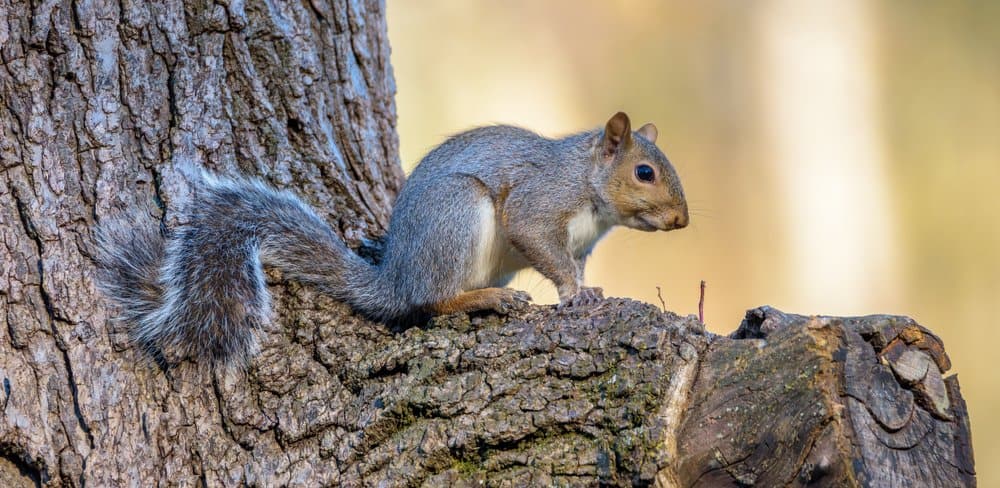
A gray squirrel’s body temperature remains constant throughout the year.
©Sterling E Thompson/Shutterstock.com
Have you ever wondered how squirrels survive New York’s freezing temperatures?
Humans respond to cold by staying indoors and adding coat layers. Gray squirrels seem to have a similar strategy for surviving winter.
Predominantly, squirrels are homeotherms, meaning their body temperatures remain constant throughout the year. In winter, they share dens and spend less time scavenging outside. This behavior ensures that more animals take shelter to keep each other warm.
Another tactic is caching or hoarding food, whereby squirrels store stashed food for later use. The stockpiled food is served when resources become scarce in winter. Throughout the fall, these critters maximize food consumption and minimize it during winter.
Shivering is another great strategy gray squirrels use to keep warm when it’s brutally cold in New York. While it doesn’t sound fun, shivering is excellent for generating heat.
Chipmunk
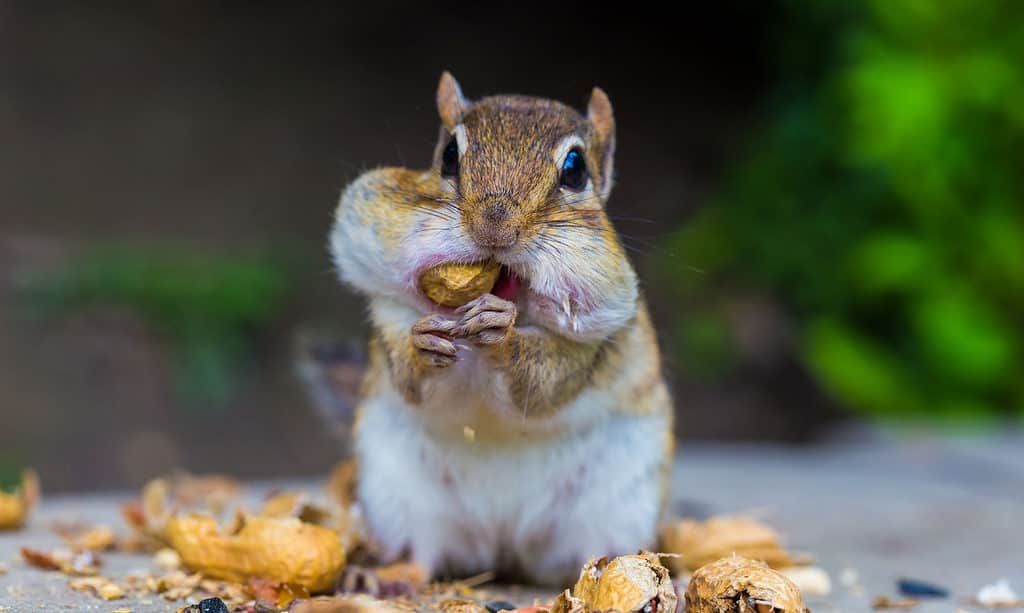
When a chipmunk hibernates, it enters torpor, reducing its metabolic rate to survive the winter with less food.
©colacat/Shutterstock.com
Surviving the cold and amid food scarcity can be a horror to chipmunks and other rodents. When the teeth-chattering cold hits New York State, food insufficiency can starve chipmunks.
Fortunately, these animals have smart survival tactics.
Most rodents hibernate during winter, and chipmunks are no exception. But they’re not true hibernators like other rodents since they don’t hibernate the entire time. Instead, in this state, the animals enter states of torpor. Then, being the underground masters, they spend winter underneath, building their burrows deeper in the ground.
The surfaces stay warmer compared to the upper ground, preventing them from freezing. Although they hibernate, their hibernation is unlike other animals, meaning they do half-hibernation. After a few days, they wake up to feed, urinate and defecate.
When winter comes, chipmunks go underground and enter a state of torpor or sleep. In this condition, the heart rate and respiration rate lessens. The standard breath-in rate is 60 beats per minute. But winter temperatures make it slow down to 20 beats per minute.
White-Tailed Deer
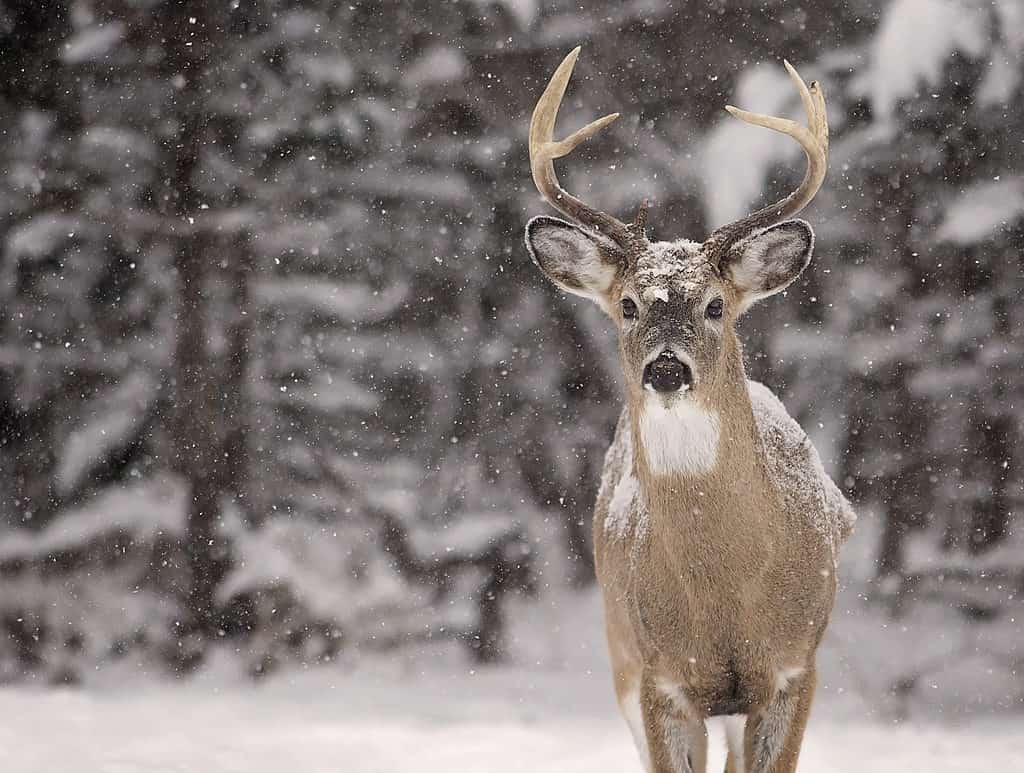
Deer prepare themselves for winter by way of insulating themselves with thicker fur.
©iStock.com/Lynn_Bystrom
Another animal that survives well during winter in New York is the white-tailed deer. It has developed remarkable adaptations that enable it to survive cold temperatures and deep snow.
Like many animals, deer prepare physically for winter by insulating their bodies. During fall, these mammals grow longer, darker, and longer hairs. They also grow thicker undercoats to absorb more sunlight while trapping more heat to keep them warm.
For further insulation, white-tailed deer retain more layers of fat during fall to prepare for winter. As a result, they become less active, halving their metabolism to eat less and save energy. In addition, deer seek places such as under a coniferous tree, which allows snow to build up. This creates a wall to shield them from the wind.
Besides, white-tailed deer can survive cold weather by eating twigs, grasses, and stems wherever they find them. They can supplement it with nuts, mushrooms, and fruits. Since they’re browsers, they don’t necessarily get under the snow to feed.
Groundhog
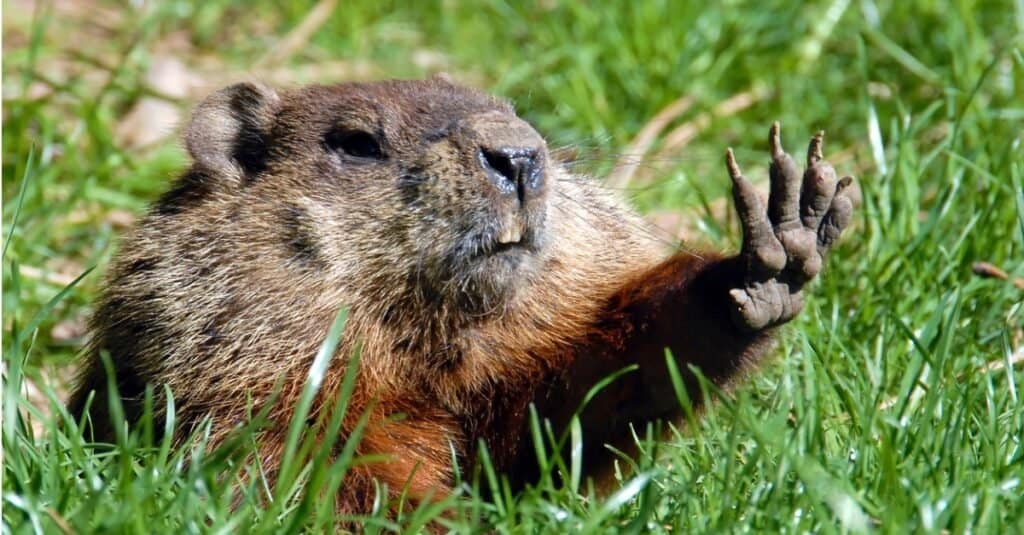
Consuming a pound of food before hibernation, groundhogs can make their hibernation last for about 150 days.
©iStock.com/mirecca
The unforgiving winter season in New York can be challenging for groundhogs, also known as woodchucks. On one day, the animal is caught between being a villain and a celebrity. Although they can make a meal from our garden vegetables, the groundhog’s shadow helps us predict seasons. But because they hibernate during winter, they’re unlikely to cause damage in cold months.
Groundhogs live off fat stored during their hibernation season, which can last for about six months. Besides, their body temperatures drop from 90 degrees Fahrenheit to as low as 40 degrees Fahrenheit. As a result, the standard heat beat is 100 beats per minute but drops to four beats per minute in winter.
Before hibernation, woodchucks can consume a pound of food. However, with the combination of low metabolism, these animals can hibernate without food for about 150 days. As a result, they lose less than a quarter of their body weight.
Snapping Turtle

A snapping turtle’s body temperature adjusts to the environment.
©iStock.com/Emily Jackson Photography
We see various types of turtles roaming around New York waters in summertime. But where do these creatures go when temperatures are low? Snapping turtles spend their time in ponds or lakes and survive through various adaptations.
These reptiles are cold-blooded or ectotherms, meaning their body temperatures adjust to the environment. For example, during winter, the temperatures drop to match the surroundings, lowering metabolism.
Another tactic is living underwater because temperatures in the water remain consistent. Unlike frogs, snapping turtles cannot survive with ice crystals in their bodies.
Usually, turtles breathe like humans through their lungs. But during winter, the oxygen in the water passes over other body parts filled with blood vessels, such as the cloaca, mouth, and skin.
As winter continues, snapping turtles switch their metabolism to one that doesn’t require oxygen. It minimizes acid buildup to prevent tissue damage over time.
Bullfrog
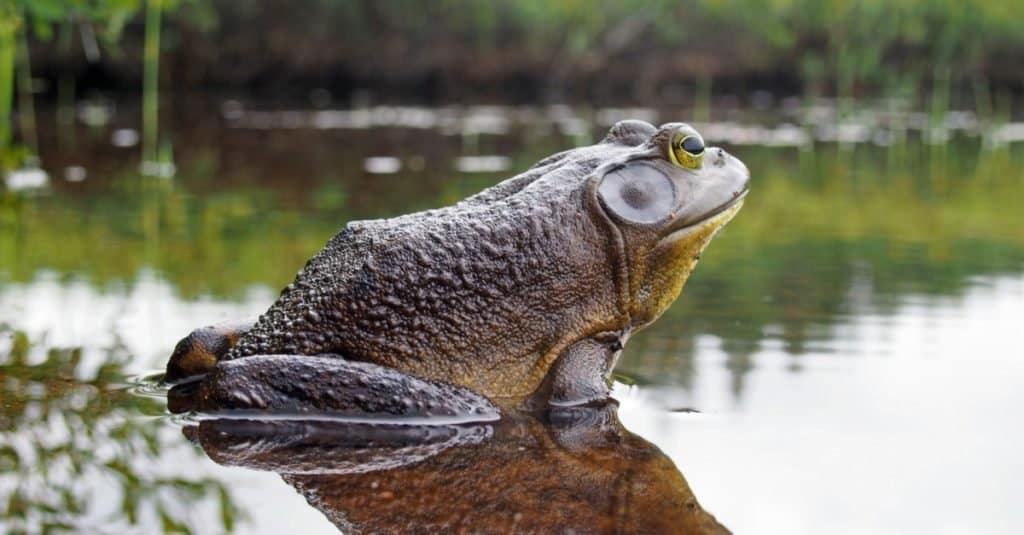
The typical response to winter on a bullfrog’s part, like many other creatures, is hibernation.
©Christian Ouellet/Shutterstock.com
Despite their inoffensive ways and fragile appearance, frogs are amazing creatures. They have amazing ways to deal with the climate changes the environment has to offer.
Hibernation is a typical response to winter in New York state. Various species use estivation or hibernation strategies to cope with environmental extremes, although hibernation is the most common way to respond to winter.
Aquatic frogs like the American bullfrog or leopard frog hibernate underwater. But they don’t survive like turtles (going deeper into water). Instead, they live near the surface to get enough oxygen and spend more time partially buried.
Estivation is a dormant state that an animal assumes in response to harsh weather.
Spring Peeper
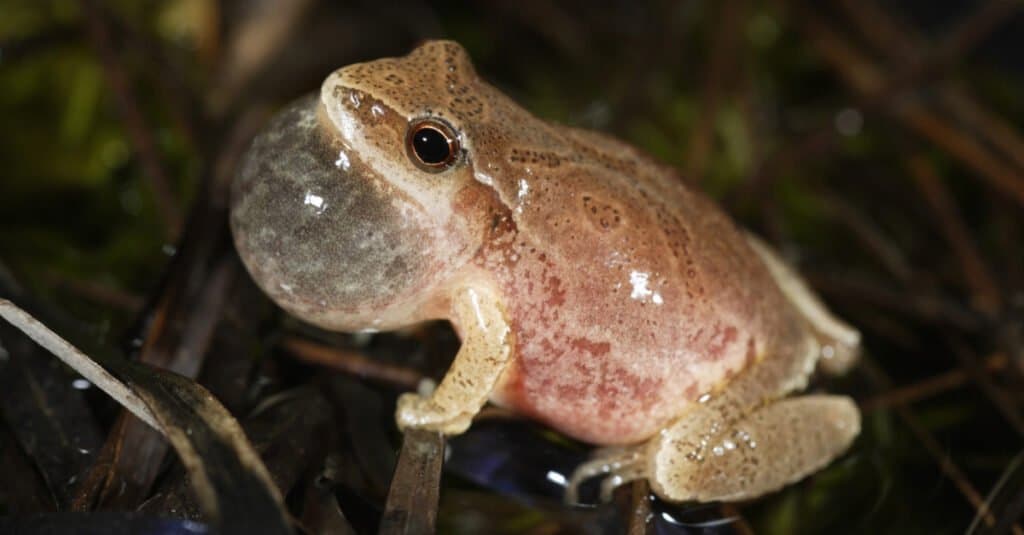
Stored sugar in their bodies acts as an antifreeze of sorts for spring peepers.
©Paul Tessier/Shutterstock.com
Winter in New York State can be brutal for most animals but not for spring peepers. Peepers wake up even with snow on the ground to reproduce.
Although they’re dormant during winter with cold bodies, their organs and cells still require energy to stay alive. They rely on energy stored during autumn to keep them going. The stored sugar acts as an antifreeze in the cells for nourishment. The carbohydrates ferment to provide energy for slow metabolism.
When the carbs dwindle, peepers wake up to migrate to bushy swamps, marshes, or woodland pools.
Bumblebee
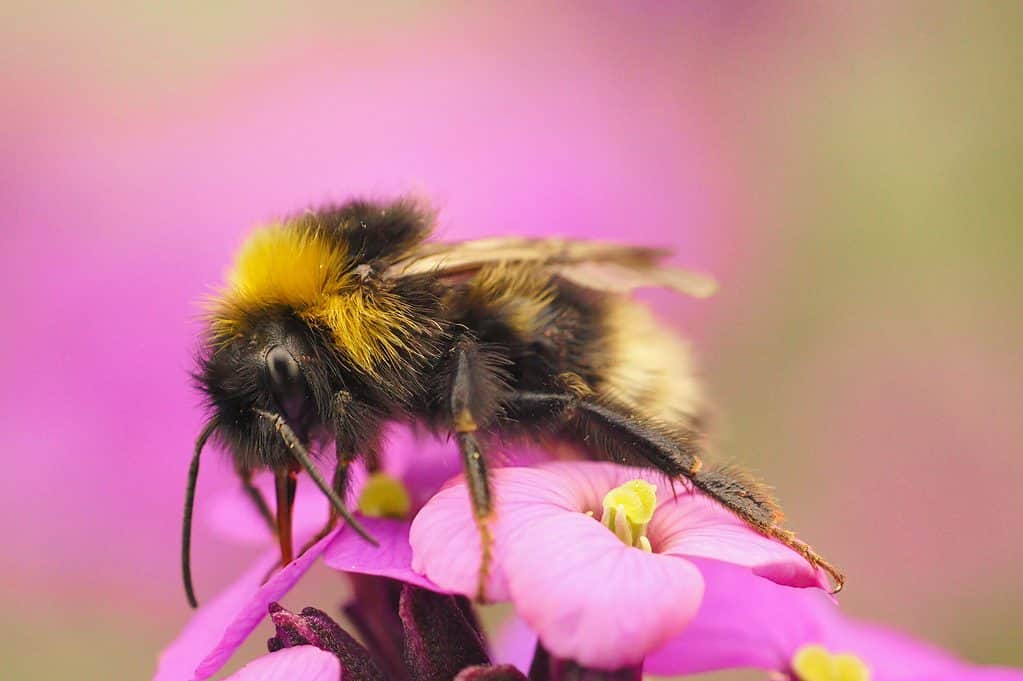
Most colonies of bumblebees die during the winter, as the queen of the hive seeks refuge underground, ultimately allowing the hive to continue on after winter.
©HWall/Shutterstock.com
Do bumblebees migrate or hibernate during winter? Even though bumblebees and honey bees are closely related, their life cycles differ. For example, the bumblebee queen hibernates in a tiny nest underground, just enough for her.
As winter temperatures get chilly, the queen produces glycerol, a chemical that keeps her from freezing while she remains buried throughout the season.
This type of lifecycle means most colonies will die, and the new bumblebee queen will live. Hibernation sites vary, with some preferring soil banks or slopes. They may also seek refuge in an old pile of leaves, rubble, or compost heap.
Timber Rattlesnake
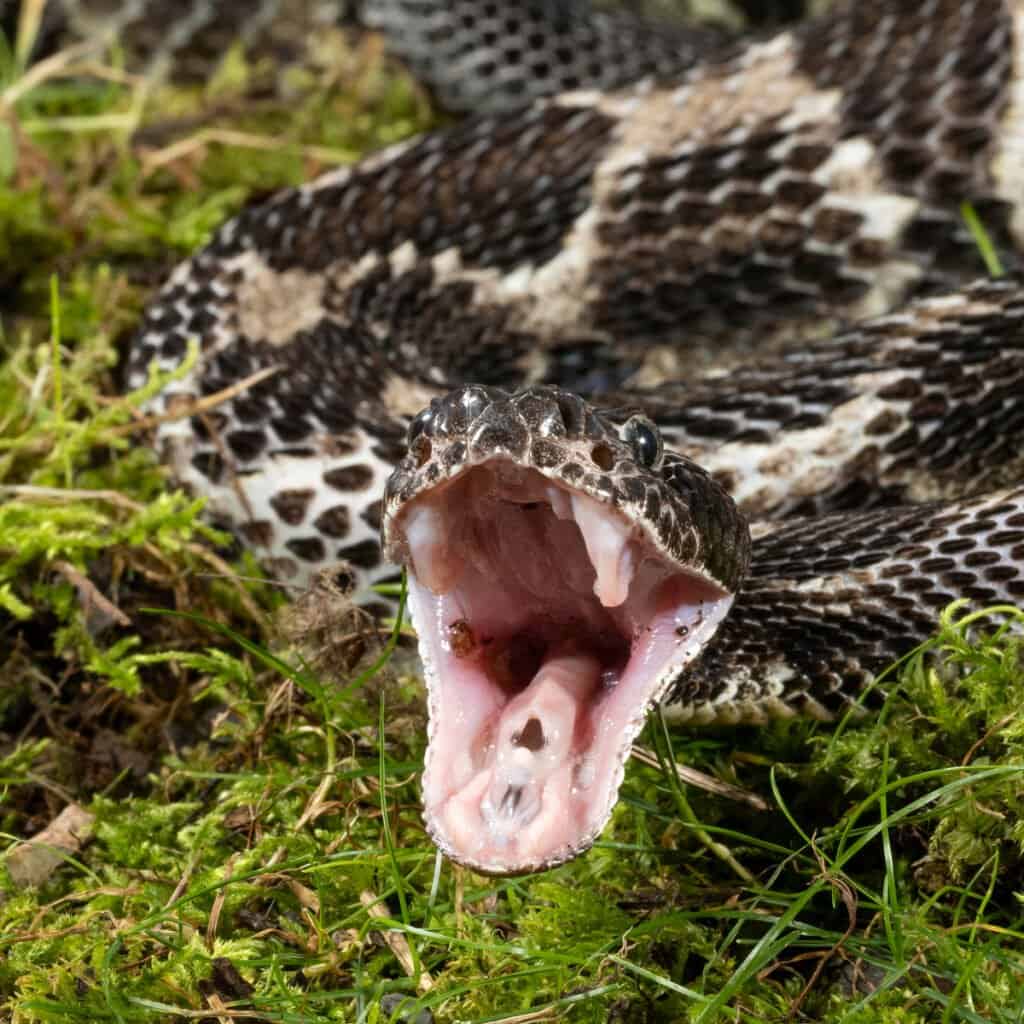
Underground hibernation is the timber rattlesnake’s means of survival over the winter.
©Joe McDonald/Shutterstock.com
Measuring about four feet, timber rattlesnakes are large, venomous snakes found in New York.
Despite their cryptic patterns and size, the coloration enables them to conceal themselves from their surrounding environment. The key distinctive feature of these species providing their names is the rattle. The vibrating segments make rapid contact with each other, producing a buzzing sound.
In New York, these species are active from mid-May and spend most of their time basking or undercover. They primarily feed on:
- Chipmunks
- Small birds
- Squirrels
- Mice
The venom that immobilizes prey can be fatal to humans if the bite goes untreated.
They are found in small numbers in the state with isolated populations on the edges of the Adirondacks, Catskills, and southeastern New York.
In the winter, the species hibernate in crevices underground. But they become less active in a state known as brumation. At this stage, the slithers lower their metabolic rates drastically by 70% to allow them to live for months without food.
Yellow Perch
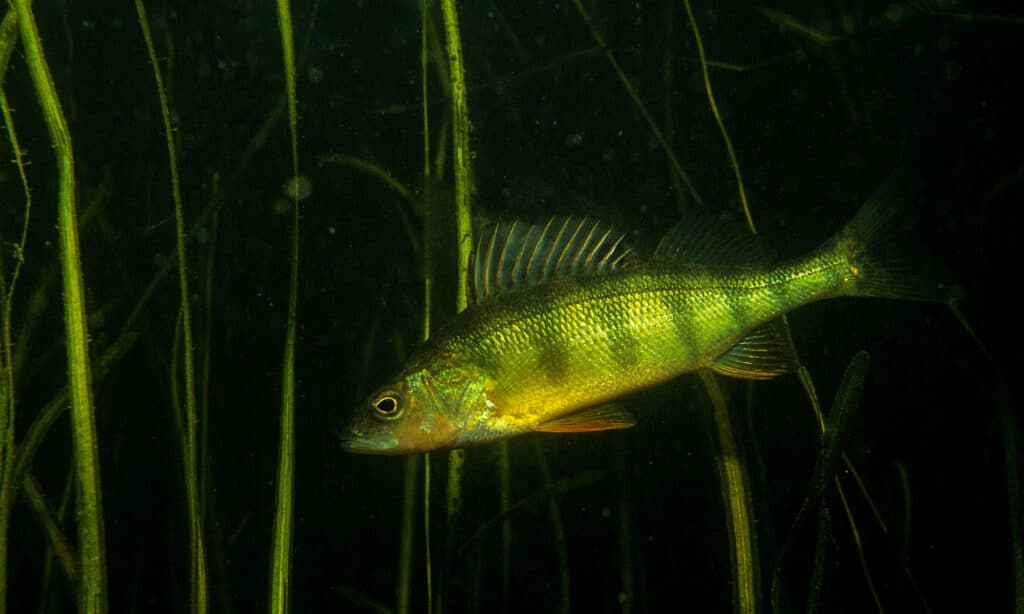
Remaining active throughout the year, with constant movement, winter doesn’t affect yellow perches to the extent it affects other animals. They stay at the bottom of their waters to keep warm, though.
©RLS Photo/Shutterstock.com
Undoubtedly, winter in New York is cold, and humans and animals have varied adaptations. Yellow perches also have survival tactics during winter.
These species remain active throughout the year. Yellow perch often feed exclusively off deep waters, and they’re notoriously known for their constant movements.
For those who’d like to fish in the winter, you can use jig heads combined with minnows or wax worms. Fishing typically starts at the bottom as the perch stays there to keep warm.
Final Thoughts
Winter nights in New York are frigid, so adding layers is wise. You can spot some of the animals that brave the chilly and crisp weather of the state. And just like summer, temperatures vary, with the Adirondacks recording temps ranging between 18 and 23 degrees Fahrenheit. Despite the windy and cold months, there are tons of activities to enjoy in this stunning state.
Up Next…
- The 11 Worst Blizzards in the United States
- Animals in New York State
- The 12 Best Dog Parks in New York City
The photo featured at the top of this post is © Andre Carrotflower / CC BY-SA 4.0 – License / Original
Thank you for reading! Have some feedback for us? Contact the AZ Animals editorial team.






